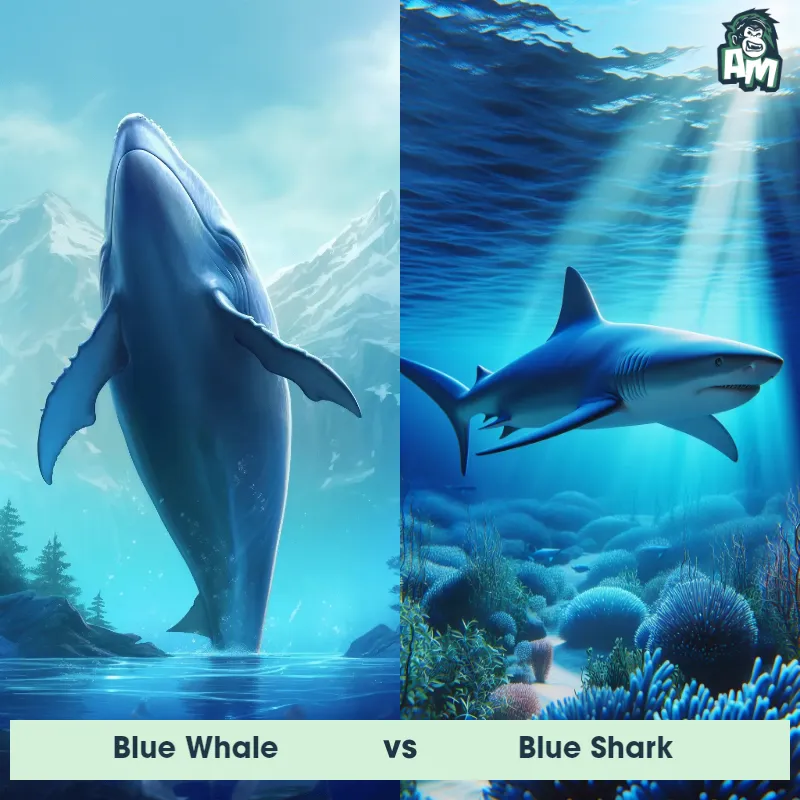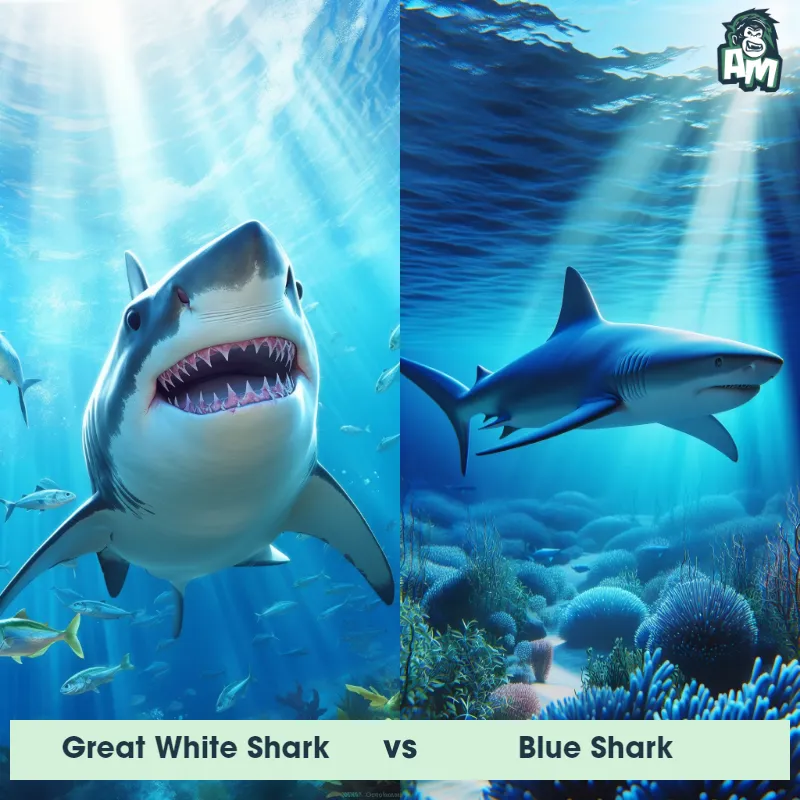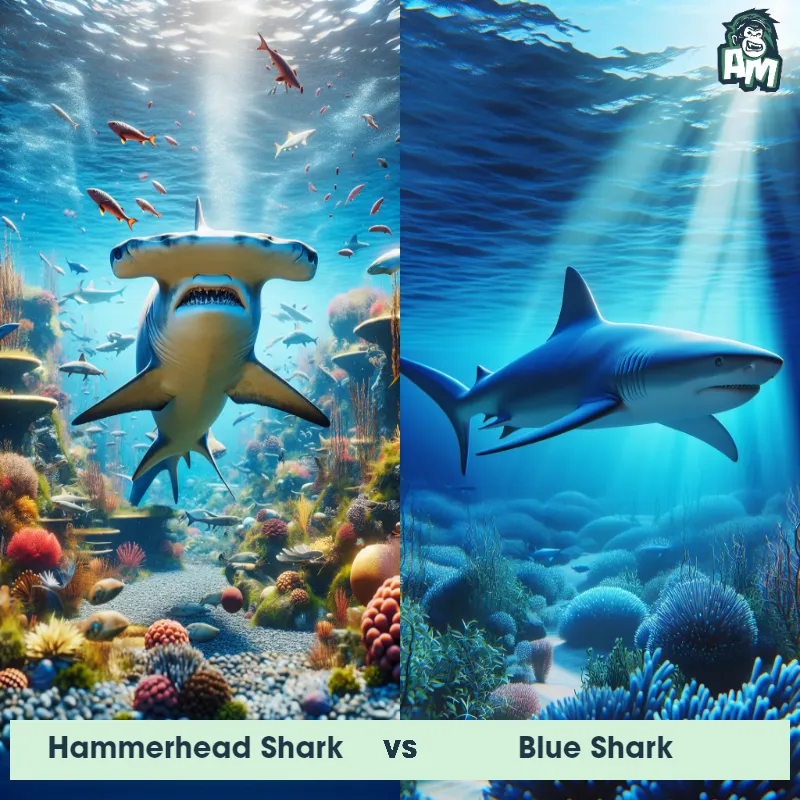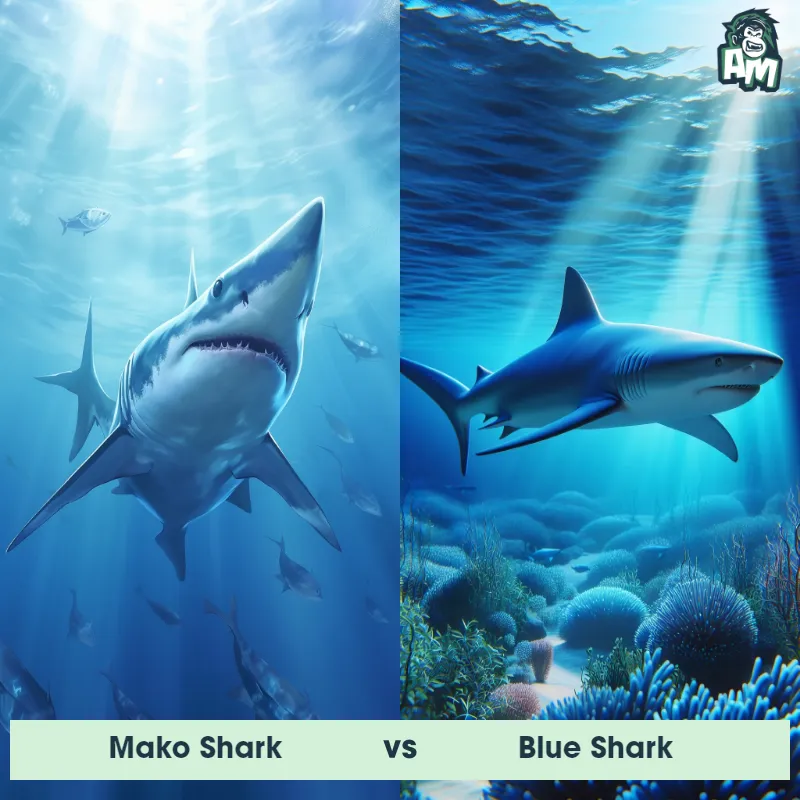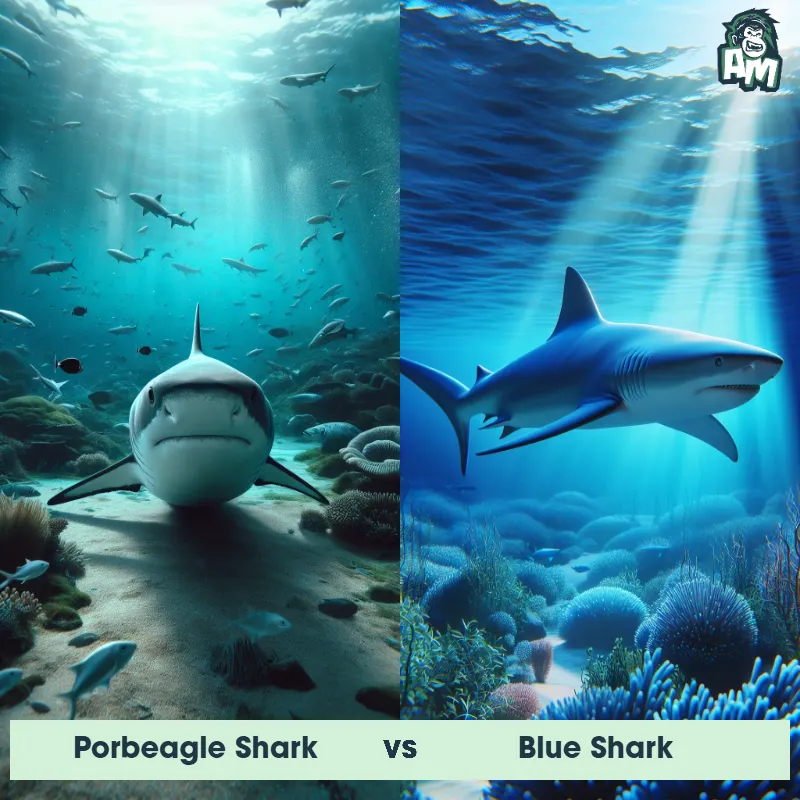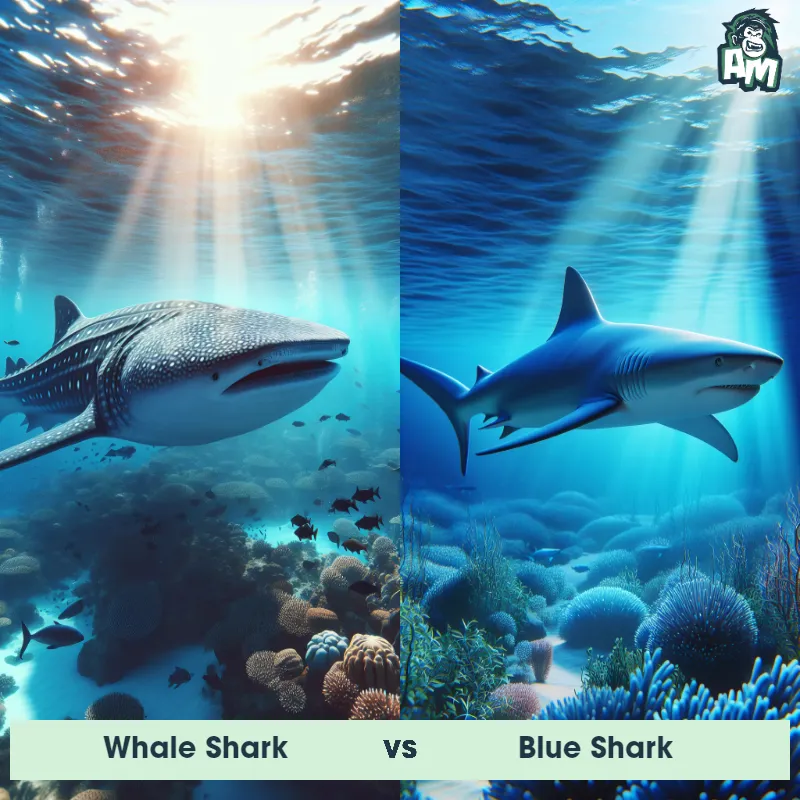The Blue Shark
The Blue Shark, also known as the Prionace glauca, is a species of shark characterized by its slender and long body shape, measuring around 6 to 10 feet in length. With its distinct blue coloration on the upper part of its body and white underside, this shark has a sleek appearance in the water. Known for their exceptional swimming abilities, blue sharks are capable of reaching speeds of up to 43 miles per hour. They are highly migratory and can be found in both warm and temperate waters around the world. This species mainly feeds on fish and squid, using their sharp teeth and powerful jaws to capture their prey.
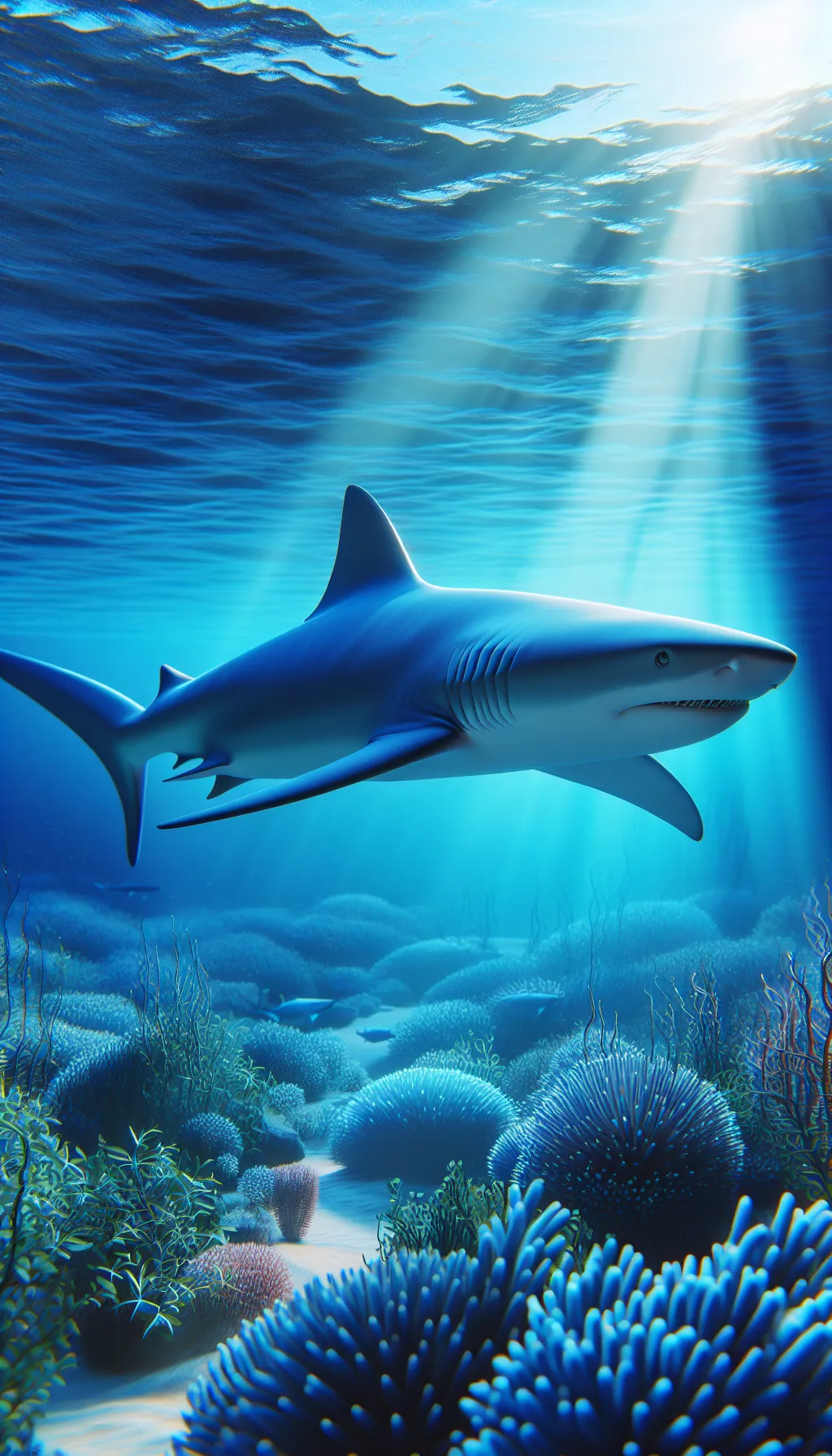
| Blue Shark | |
|---|---|
| Size | Up to 12 feet (3.8 meters) |
| Weight | Up to 400 pounds (180 kilograms) |
| Speed | 25 mph (40 km/h) |
| Key Strength | Strong swimming and agility |
| Biggest Weakness | Relatively timid and avoids confrontation |
| Scientific Name | Prionace glauca |
| Family | Carcharhinidae |
| Habitat | Open ocean |
| Geography | Various oceans worldwide |
| Diet | Feeds on fish, squid, and other marine animals |
| Lifespan | 20 years - 30 years |

The Blue Shark
The Blue Shark, also known as the Prionace glauca, is a species of shark characterized by its slender and long body shape, measuring around 6 to 10 feet in length. With its distinct blue coloration on the upper part of its body and white underside, this shark has a sleek appearance in the water. Known for their exceptional swimming abilities, blue sharks are capable of reaching speeds of up to 43 miles per hour. They are highly migratory and can be found in both warm and temperate waters around the world. This species mainly feeds on fish and squid, using their sharp teeth and powerful jaws to capture their prey.
![[object Object] Gif](https://tenor.com/view/blue-shark-boop-gif-4331805278509584479.gif)
Fun Fact: Blue Sharks are known for their incredible endurance and have been observed to swim non-stop for days, even covering vast distances during their migratory journeys, spanning thousands of miles.
| Blue Shark | |
|---|---|
| Size | Up to 12 feet (3.8 meters) |
| Weight | Up to 400 pounds (180 kilograms) |
| Speed | 25 mph (40 km/h) |
| Key Strength | Strong swimming and agility |
| Biggest Weakness | Relatively timid and avoids confrontation |
| Scientific Name | Prionace glauca |
| Family | Carcharhinidae |
| Habitat | Open ocean |
| Geography | Various oceans worldwide |
| Diet | Feeds on fish, squid, and other marine animals |
| Lifespan | 20 years - 30 years |
Blue Shark Matchups
We use AI to simulate matchups between the Blue Shark and other animals. Our simulation considers size, strength, and natural predatory behaviors to determine the most likely outcome.
Blue Shark: Diet, Predators, Aggression, and Defensive Behaviors
What do Blue Sharks eat?
Blue Sharks primarily feed on a diet of fish and squid. They are opportunistic feeders and will also consume small sharks, rays, and even some marine mammals if the opportunity arises. Their diet can vary depending on the availability of prey in their habitat.
Do Blue Sharks have any predators?
Despite being apex predators themselves, Blue Sharks do have some predators. Larger sharks such as the Great White Shark and Tiger Shark are known to prey on Blue Sharks. Additionally, killer whales (orcas) have been observed hunting and feeding on Blue Sharks.
Are Blue Sharks aggressive?
Blue Sharks are not typically considered aggressive towards humans. They are known to be curious and may investigate divers or boats that enter their territory. However, attacks on humans are rare, and Blue Sharks are not generally considered a threat to swimmers or surfers.
Do Blue Sharks fight with other species?
Blue Sharks are known to engage in aggressive interactions with other sharks, especially when competing for prey or territory. They may display aggressive behaviors such as circling each other, bumping, and even biting in some cases. These fights are usually for dominance and breeding rights rather than for food.
How do Blue Sharks defend themselves?
Blue Sharks have several defense mechanisms to protect themselves from potential threats. One of their primary defenses is their speed and agility in the water, allowing them to evade predators or threats. They also have sharp teeth and may use biting as a last resort to defend themselves when necessary.
What is the biggest weakness of Blue Sharks in a fight?
Despite their speed and agility, Blue Sharks have a vulnerability in their gill slits, which are important for breathing. If their gills are damaged or obstructed during a fight, it can significantly impair the shark's ability to obtain oxygen from the water, making them more vulnerable to exhaustion or suffocation. This weakness can be exploited by larger predators or rivals in aggressive encounters.
Fun Fact: Despite being known for their aggressive-looking appearance, Blue Sharks are generally not considered dangerous to humans and are categorized as a low risk for attacks, primarily because their prey is usually found at greater depths, away from human interaction.
Fun Fact: Blue Sharks possess a remarkable sense of smell, and they are capable of detecting blood in the water from miles away, thanks to the sensory organs called ampullae of Lorenzini located on their snout, which allow them to pinpoint their prey with precision.




